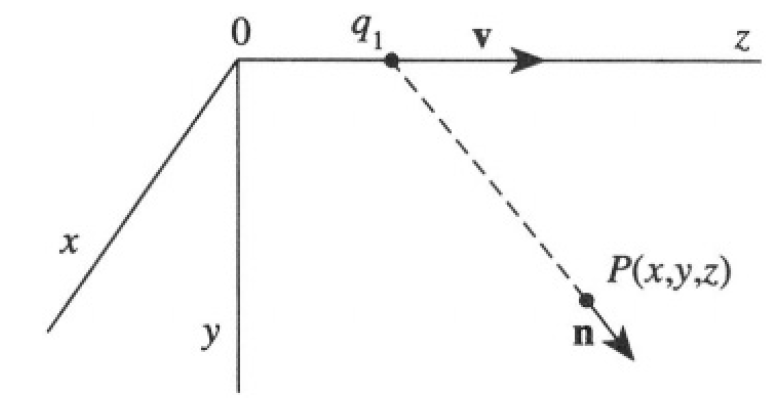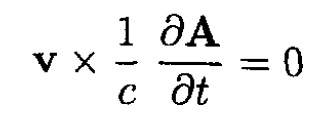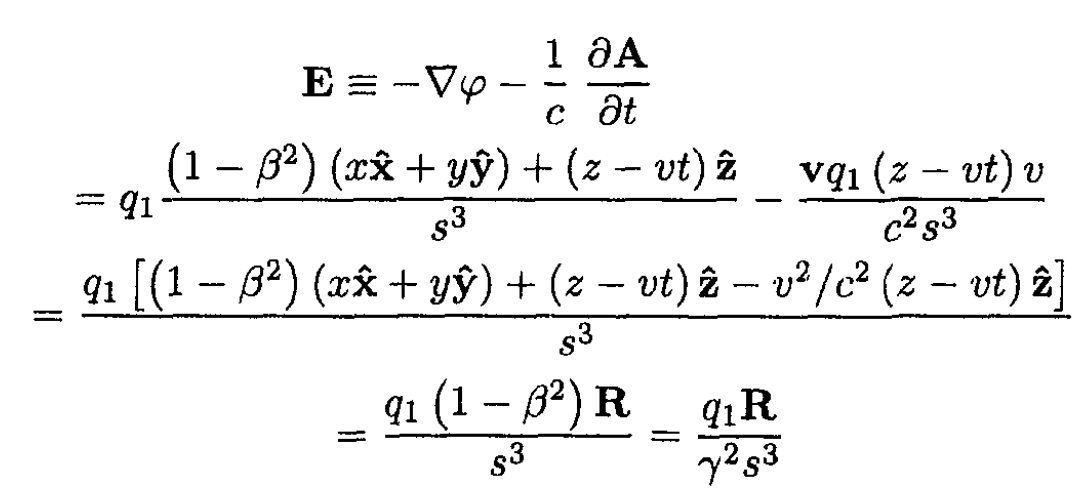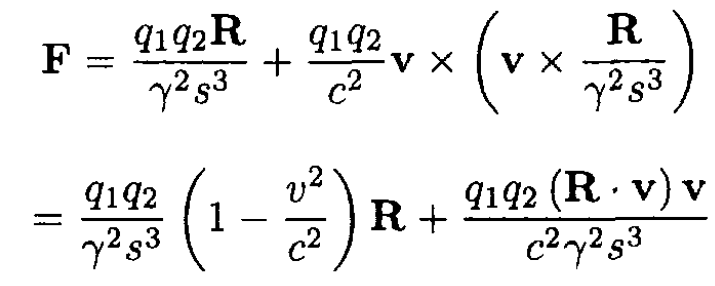
Field of a Moving Charge
 المؤلف:
Sidney B. Cahn Boris E. Nadgorny
المؤلف:
Sidney B. Cahn Boris E. Nadgorny
 المصدر:
A GUIDE TO PHYSICS PROBLEMS
المصدر:
A GUIDE TO PHYSICS PROBLEMS
 الجزء والصفحة:
part 1 , p 70
الجزء والصفحة:
part 1 , p 70
 9-8-2016
9-8-2016
 1380
1380
Field of a Moving Charge
A charged particle with charge q1 moves with constant velocity v along the z-axis (see Figure 1.1). Its potentials are

Where s = [(1-β2) (x2-y2) + (x-vt)2]1/2 and β = v/c

Figure 1.1
a) Show that ϕ and A satisfy the Lorentz condition

b) Calculate the fields E and B at point P (x, y, z) and time t. Show first that B = (v/c) × E, and calculate E explicitly. Show that E is parallel to n.
c) Assume at P a second particle with charge q2 moving with the same velocity v as the first. Calculate the force on q2.
SOLUTION
a) Differentiating, we obtain
 (1)
(1)
and, since v lies only in the z direction (see Figure 1.2)
 (2)
(2)
b) To calculate B, we recall from the definition of A that
 (3)
(3)
where we have used the fact that

Now,
 (4)
(4)

Figure 1.2
where  is the vector from the charge to point P and therefore is parallel to n. The same results can be obtained by calculating E in the moving frame (with the charge q1) and then taking the Lorentz transformation.
is the vector from the charge to point P and therefore is parallel to n. The same results can be obtained by calculating E in the moving frame (with the charge q1) and then taking the Lorentz transformation.
c) The force acting on charge q2 can be calculated as the force acting on q2 in the field of q1 from (4):
 (5)
(5)
where we used (3). Substituting E from (4), we find

We can express through the angle θ between R and ẑ (see Figure 1.2):

where we used x2 + y2 = R2 sin θ, and so s = |R| (1- β2 sin2 θ)1/2. Now, F may be written as a sum of the projections perpendicular and parallel to the z direction:

 الاكثر قراءة في مواضيع اخرى
الاكثر قراءة في مواضيع اخرى
 اخر الاخبار
اخر الاخبار
اخبار العتبة العباسية المقدسة


